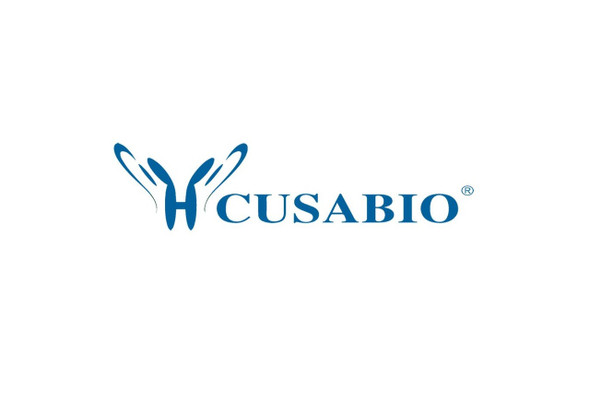Cusabio Human Recombinants
Recombinant Human Prestin (SLC26A5), partial | CSB-YP021528HU
- SKU:
- CSB-YP021528HU
- Availability:
- 25 - 35 Working Days
Description
Recombinant Human Prestin (SLC26A5), partial | CSB-YP021528HU | Cusabio
Alternative Name(s): Solute carrier family 26 member 5
Gene Names: SLC26A5
Research Areas: Neuroscience
Organism: Homo sapiens (Human)
AA Sequence: YRTQSPSYKVLGKLPETDVYIDIDAYEEVKEIPGIKIFQINAPIYYANSDLYSNALKRKTGVNPAVIMGARRKAMRKYAKEVGNANMANATVVKADAEVDGEDATKPEEEDGEVKYPPIVIKSTFPEEMQRFMPPGDNVHTVILDFTQVNFIDSVGVKTLAGIVKEYGDVGIYVYLAGCSAQVVNDLTRNRFFENPALWELLFHSIHDAVLGSQLREALAEQEASAPPSQEDLEPNATPATPEA
Source: Yeast
Tag Info: N-terminal 6xHis-tagged
Expression Region: 501-744aa
Sequence Info: Cytoplasmic Domain
MW: 29 kDa
Purity: Greater than 90% as determined by SDS-PAGE.
Relevance: Motor protein that converts auditory stimuli to length changes in outer hair cells and mediates sound amplification in the mammalian hearing organ. Prestin is a bidirectional voltage-to-force converter, it can operate at microsecond rates. It uses Cytoplasmic domain anions as extrinsic voltage sensors, probably chloride and bicarbonate. After binding to a site with millimolar affinity, these anions are translocated across the mbrane in response to changes in the transmbrane voltage. They move towards the Extracellular domain surface following hyperpolarization, and towards the Cytoplasmic domain side in response to depolarization. As a consequence, this translocation triggers conformational changes in the protein that ultimately alter its surface area in the plane of the plasma mbrane. The area decreases when the anion is near the Cytoplasmic domain face of the mbrane (short state), and increases when the ion has crossed the mbrane to the outer surface (long state). So, it acts as an incomplete transporter. It swings anions across the mbrane, but does not allow these anions to dissociate and escape to the Extracellular domain space. Salicylate, an inhibitor of outer hair cell motility, acts as competitive antagonist at the prestin anion-binding site .
Reference: Prestin, a cochlear motor protein, is defective in non-syndromic hearing loss.Liu X.Z., Ouyang X.M., Xia X.J., Zheng J., Pandya A., Li F., Du L.L., Welch K.O., Petit C., Smith R.J.H., Webb B.T., Yan D., Arnos K.S., Corey D., Dallos P., Nance W.E., Chen Z.-Y.Hum. Mol. Genet. 12:1155-1162(2003)
Storage: The shelf life is related to many factors, storage state, buffer ingredients, storage temperature and the stability of the protein itself. Generally, the shelf life of liquid form is 6 months at -20?/-80?. The shelf life of lyophilized form is 12 months at -20?/-80?.
Notes: Repeated freezing and thawing is not recommended. Store working aliquots at 4? for up to one week.
Function: Motor protein that converts auditory stimuli to length changes in outer hair cells and mediates sound amplification in the mammalian hearing organ. Prestin is a bidirectional voltage-to-force converter, it can operate at microsecond rates. It uses cytoplasmic anions as extrinsic voltage sensors, probably chloride and bicarbonate. After binding to a site with millimolar affinity, these anions are translocated across the membrane in response to changes in the transmembrane voltage. They move towards the extracellular surface following hyperpolarization, and towards the cytoplasmic side in response to depolarization. As a consequence, this translocation triggers conformational changes in the protein that ultimately alter its surface area in the plane of the plasma membrane. The area decreases when the anion is near the cytoplasmic face of the membrane (short state), and increases when the ion has crossed the membrane to the outer surface (long state). So, it acts as an incomplete transporter. It swings anions across the membrane, but does not allow these anions to dissociate and escape to the extracellular space. Salicylate, an inhibitor of outer hair cell motility, acts as competitive antagonist at the prestin anion-binding site (By similarity).
Involvement in disease: Deafness, autosomal recessive, 61 (DFNB61)
Subcellular Location: Cell membrane, Multi-pass membrane protein
Protein Families: SLC26A/SulP transporter (TC 2.A.53) family
Tissue Specificity:
Paythway:
Form: Liquid or Lyophilized powder
Buffer: If the delivery form is liquid, the default storage buffer is Tris/PBS-based buffer, 5%-50% glycerol. If the delivery form is lyophilized powder, the buffer before lyophilization is Tris/PBS-based buffer, 6% Trehalose, pH 8.0.
Reconstitution: We recommend that this vial be briefly centrifuged prior to opening to bring the contents to the bottom. Please reconstitute protein in deionized sterile water to a concentration of 0.1-1.0 mg/mL.We recommend to add 5-50% of glycerol (final concentration) and aliquot for long-term storage at -20?/-80?. Our default final concentration of glycerol is 50%. Customers could use it as reference.
Uniprot ID: P58743
HGNC Database Link: HGNC
UniGene Database Link: UniGene
KEGG Database Link: KEGG
STRING Database Link: STRING
OMIM Database Link: OMIM









